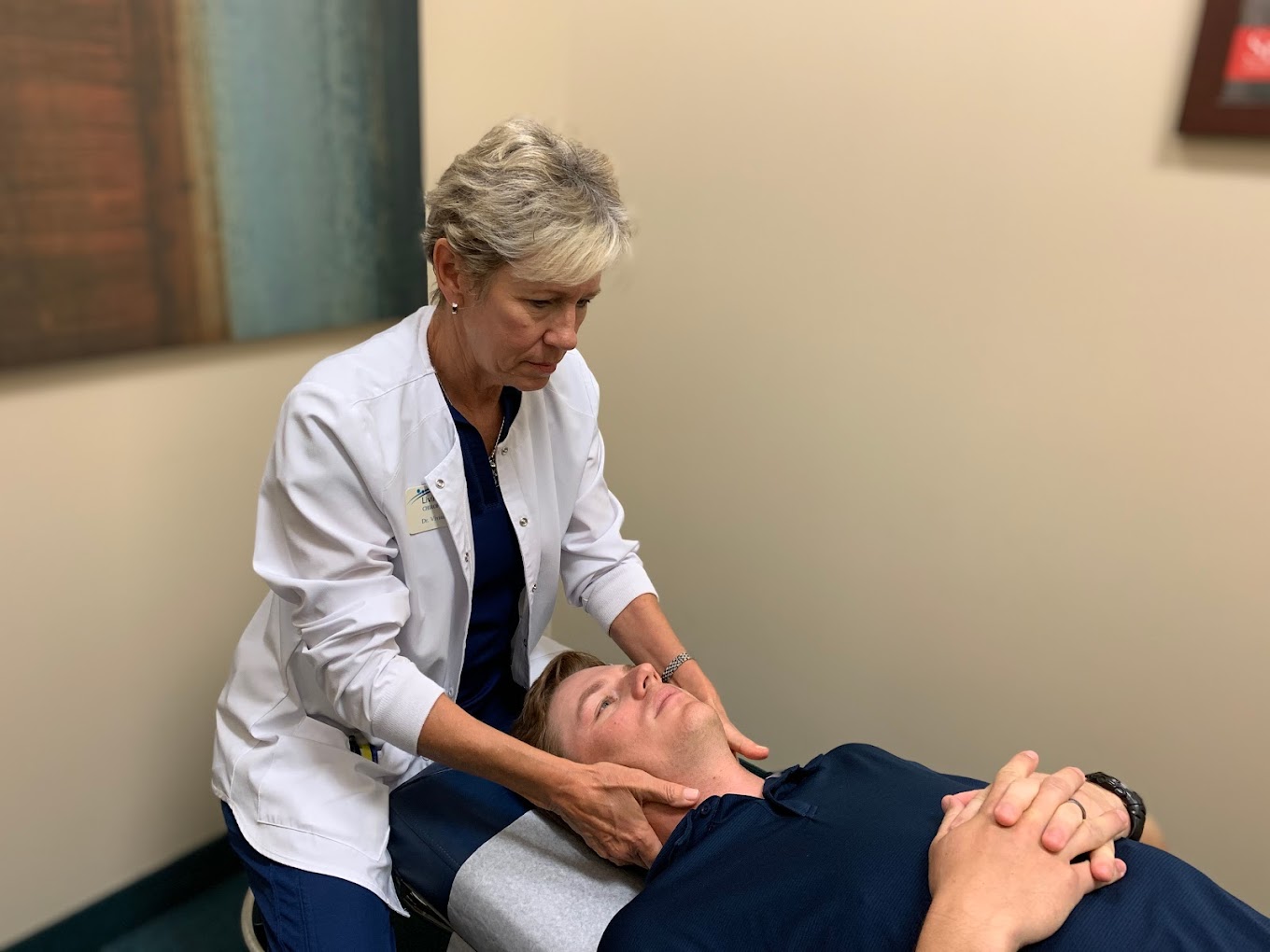Drug-Free Pain Management

In a world where quick-fix solutions and pharmaceutical interventions dominate the healthcare landscape, exploring drug-free alternatives for pain management is more critical than ever. According to a 2019 study reported by Penn Medicine(1), within seven days of discharge after surgery, about 75 percent of U.S. patients filled an opioid prescription, compared to just 11 percent of the patients in Sweden.
 By the one-month mark, nearly half of U.S. patients had received high-dose opioid prescriptions – nearly nine times higher than the rate in Sweden (5 percent). This striking contrast in opioid prescription rates between the United States and Sweden highlights the need for a more cautious and holistic approach to pain management.
By the one-month mark, nearly half of U.S. patients had received high-dose opioid prescriptions – nearly nine times higher than the rate in Sweden (5 percent). This striking contrast in opioid prescription rates between the United States and Sweden highlights the need for a more cautious and holistic approach to pain management.
In recent years, there has been increasing urgency to explore alternatives prioritizing natural healing and minimizing the risks associated with opioid reliance. In this context, chiropractic care emerges as a beacon of hope, offering a drug-free path to pain relief and improved well-being. With a holistic approach, chiropractic care addresses the root causes of pain and discomfort without relying on medications. Embrace natural healing and discover the numerous benefits of drug-free pain management here.
The Downsides of Medication-Reliant Pain Management
While medications can temporarily relieve pain, they often come with a host of potential drawbacks, including side effects, dependency, and masking of underlying issues.
 Side Effects: Many pain medications come with a laundry list of potential side effects, ranging from mild to severe. Nausea, dizziness, sedation, and even depression are not uncommon. These side effects can detract from an individual’s quality of life, causing additional challenges beyond the pain itself.
Side Effects: Many pain medications come with a laundry list of potential side effects, ranging from mild to severe. Nausea, dizziness, sedation, and even depression are not uncommon. These side effects can detract from an individual’s quality of life, causing additional challenges beyond the pain itself.
Dependency and Addiction: Some pain medications, especially those that fall into the opioid category, have a high potential for dependence and addiction. What may start as a legitimate means of managing pain can spiral into a cycle of reliance, where individuals feel they need the medication to function, even when the underlying condition has improved.
Masking Underlying Issues: Pain is often a symptom of an underlying problem, such as an injury, inflammation, or structural imbalance. Relying solely on pain medications can mask these issues, giving a false sense of improvement while the root cause worsens, leading to delayed diagnosis and appropriate treatment.
Temporary Relief: Medications typically provide temporary relief by blocking pain signals in the nervous system. While this may provide short-term comfort, it doesn’t address the source of the pain. Consequently, the pain can resurface as the medication wears off, creating a cycle of continuous reliance on medication.
Tolerance: Over time, the body can develop a tolerance to certain medications, requiring incrementally higher doses to achieve the same level of pain relief. Escalating doses can lead to increased side effects and risks, further complicating the individual’s well-being.
Long-Term Effects: The prolonged use of pain medications, especially those not intended for long-term use, can adversely affect various systems in the human body. These effects can range from damage to the liver and kidneys to disruptions in the gastrointestinal tract.
The Role of Chiropractic Care in Pain Management
Chiropractic care takes a different approach by focusing on the relationship between the spine, nervous system, and overall body function. Misalignments or imbalances in the spine can interfere with the body’s natural ability to heal and regulate itself.
By performing manual adjustments, chiropractors aim to restore proper alignment, reduce nerve interference, and promote optimal functioning. With a personalized approach, each patient gains a comprehensive perspective, recognizing that pain is often a sign that something deeper is amiss. Under chiropractic wellness care, each patient is treated as an individual, with their unique medical history, lifestyle, and needs taken into account.
 Unlike traditional pain management methods that often rely on medications to mask symptoms, chiropractic care addresses the root causes of discomfort by homing in on spinal misalignments and imbalances. These misalignments, known as subluxations, can disrupt the flow of vital nerve impulses and energy throughout the body, leading to pain, dysfunction, and even a compromised immune system.
Unlike traditional pain management methods that often rely on medications to mask symptoms, chiropractic care addresses the root causes of discomfort by homing in on spinal misalignments and imbalances. These misalignments, known as subluxations, can disrupt the flow of vital nerve impulses and energy throughout the body, leading to pain, dysfunction, and even a compromised immune system.
Benefits of Drug-Free Pain Management Through Chiropractic Care
As research underscores the potential risks associated with opioid medications, the holistic and drug-free approach of chiropractic care becomes increasingly appealing. It aligns with the growing demand for alternatives that empower patients to take charge of their health and well-being without relying on potentially harmful substances.
 Targeted Pain Relief: Chiropractors assess the spine and identify areas of misalignment that might contribute to pain; addressing these misalignments can alleviate pressure on nerves and reduce pain signals.
Targeted Pain Relief: Chiropractors assess the spine and identify areas of misalignment that might contribute to pain; addressing these misalignments can alleviate pressure on nerves and reduce pain signals.
Holistic Approach: Chiropractic care considers the whole body, not just the site of pain. This holistic approach helps uncover underlying issues contributing to a patient’s discomfort.
Non-Invasive and Natural: Chiropractic adjustments are non-invasive and drug-free, making them a safe and gentle option for pain relief. No pharmaceuticals means no risk of side effects or dependency.
Improved Functionality: Proper spinal alignment can enhance nervous system function, promoting better communication between the brain and body leading to improved mobility, flexibility, and overall well-being.
Long-Term Results: Instead of masking pain temporarily, chiropractic care aims for long-term relief by addressing the root causes of discomfort, typically resulting in sustained improvements in pain levels and quality of life.
Personalized Care: Each patient’s condition is unique, and chiropractors tailor their treatments to each individual’s needs. This personalized approach ensures the most effective and appropriate care.
Collaborative Approach: Chiropractors often collaborate with other healthcare professionals to create a comprehensive pain management plan that may include exercises, stretches, and lifestyle modifications.

As we navigate a world saturated with medication-based solutions, exploring drug-free alternatives like chiropractic care for pain management becomes increasingly important. At LivingWell Chiropractic, we are committed to helping you find relief from pain by addressing the underlying issues and supporting your body’s natural healing abilities. By embracing a holistic approach to wellness, you can experience the benefits of drug-free pain management and enjoy a higher quality of life.
When you’re searching for a “chiropractor near me,” you can feel confident directing all your chiropractic care-related questions to Dr. Vivian Ebert of LivingWell Chiropractic in Bonita Springs, FL, located in The Brooks Town Center at the northwest corner of Three Oaks Parkway and Coconut Road.
LivingWell Chiropractic provides state-of-the-art chiropractic care, spinal decompression, medical massage, and nutritional guidance with a holistic wellness approach focused on pain relief for patients with musculoskeletal conditions. Centrally located in Bonita Springs, the office is convenient for patients from Naples, Bonita Springs, Estero, and South Fort Myers.
(1) Penn Medicine is one of the world’s leading academic medical centers, dedicated to the related missions of medical education, biomedical research, excellence in patient care, and community service. The organization consists of the University of Pennsylvania Health System and Penn’s Raymond and Ruth Perelman School of Medicine, founded in 1765 as the nation’s first medical school.
Posted In:
Move Well Articles
